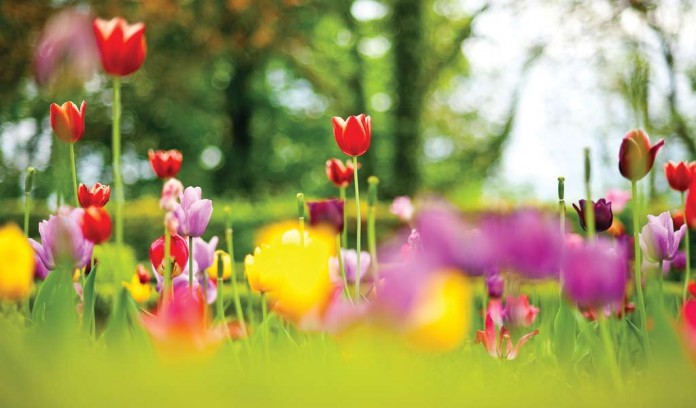Do you have seasonal allergies? If so, gardening may be a struggle for you as pollen flares up your symptoms.
Microscopic pollen causes most allergies, not the thick, yellow pollen that coats cars and sidewalks during the spring and summer. This pollen comes from trees like oak, elm, birch, maple, ash and some pines, says University of Vermont Extension.
 10 tips for allergy-free gardening
10 tips for allergy-free gardening
1. University of Vermont Extension suggests avoiding gardening in the afternoon in the spring and in the early morning in the fall. This is when pollen counts are typically at their highest in each season. In the spring, work in your garden in the morning and evening. In the fall, garden in the afternoon.
2. Avoid strongly scented flowers. These are more likely to trigger allergy flare-ups.
3. Plant low allergen-producing plants. For a lesson in flower plant biology, North Carolina State University Cooperative Extension explains the difference between dioecious and monoecious plants. If you have allergies, your best bet is to plant female dioecious plants, as only the males produce pollen. However, if you want your plants to pollinate, you’ll need a male plant, too.
4. Watch for mold in compost and in hedges. These can also affect allergies.
5. Plant insect-pollinated plants, not wind-pollinated plants. Observe bees and which plants they visit; these plants are insect-pollinated.
6. Prune pollen-producing trees and shear pollen-producing shrubs to reduce pollen production.
7. Take allergy medication, if possible, to help control symptoms.
8. You probably already know to keep windows closed (if possible) during and after the lawn has been mowed. Staying inside on windy days is another good idea, as is using your air conditioner while driving and at night. Don’t hang dry bedding outside on high pollen days. You can check pollen counts on Air Now, a website that shows the daily air quality index for your area.
9. WebMD says to choose native plants. Non-native plants may become stressed since they aren’t used to the climate, and will, therefore, produce more pollen.
10. You can reduce exposure to the plants that flare up your allergies by covering as much of your skin as possible, says University of Illinois Extension. Wear a long-sleeved shirt, long pants, gloves, a hat, sunglasses and even a mask. After you’ve finished gardening, change clothes (thoroughly wash the ones you gardened in) and shower.
 Allergy-friendly flowers
Allergy-friendly flowers
WedMD and University of Vermont Extension suggest planting the following flowers:
- Begonias
- Crocuses
- Daffodils
- Daisies
- Geraniums
- Hosta
- Impatiens
- Irises
- Lilies
- Pansies
- Periwinkle
- Petunias
- Phlox
- Roses
- Salvia
- Snapdragons
- Sunflowers
- Tulips
- Zinnias
Allergy-friendly trees
The hardwoods — like oak, maple and birch trees — are known to be big pollen producers. University of Vermont Extension suggests the following female trees for those with allergies, as they have low or no pollen:
- Apple
- Ash
- Certain maple
- Crabapple
- Cherry
- Pear
- Plum
- Poplar
- Willow
 Allergy-friendly shrubs
Allergy-friendly shrubs
According to WedMD, the following shrubs are good choices for allergy sufferers:
- Azalea
- Boxwood
- Hibiscus
- Hydrangea
Other harmful plants
Allergenic plants are just one of five types of plants that can cause skin irritations and injuries. Ohio State University Extension has more information about the other types of harmful plants.
Do you have other tips for gardening with allergies? Tell us in the comments section below.







 10 tips for allergy-free gardening
10 tips for allergy-free gardening Allergy-friendly flowers
Allergy-friendly flowers
 Allergy-friendly shrubs
Allergy-friendly shrubs





